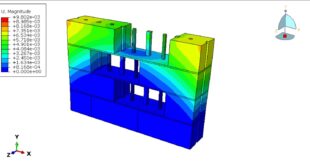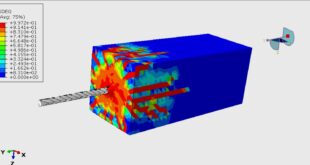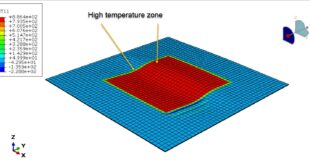In this tutorial, the Simulation Coupled Eulerian-Lagrangian explosion on the Ice surface in interaction with water and air in Abaqus has been studied. The ice, water, air, and TNT are modeled as a three-dimensional solid part. The domain part is modeled as a three-dimensional Eulerian part. You can see figures of the assembled parts below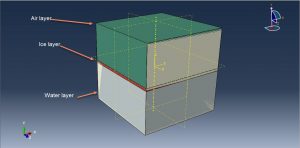
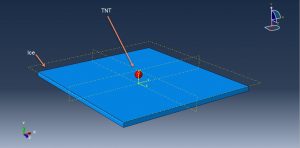
To model TNT behavior, the JWL equation of state is used. The Jones-Wilkens-Lee (or JWL) equation of state models the pressure generated by the release of chemical energy in an explosive. This model is implemented in a form referred to as a programmed burn, which means that the reaction and initiation of the explosive are not determined by shock in the material. Instead, the initiation time is determined by a geometric construction using the detonation wave speed and the distance of the material point from the detonation points. The air is modeled as an ideal gas with viscosity. The Us-Up equation of state is considered to define water properties. To model ice material, Abaqus has some material model which they can be used to demonstrate the ice behavior. During the explosion, ice will experience the failure and huge damage, so it needs the proper definition for the material, To define ice material, input file capability can be used to generate the new material model. The dynamic explicit step with general contact is appropriate for this type of analysis. The boundary condition is assigned to the Eulerian domain and the ice. The volume fraction method is used to define the amount of TNT and its location. The mesh should be fine to achieve good results
After the simulation all results such as ice failure and damage, stress, strain, TNT propagation, and … are achievable. You can see some figures for the results below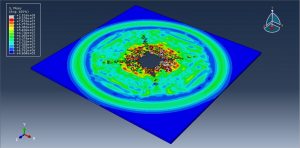
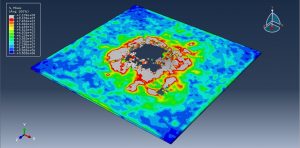
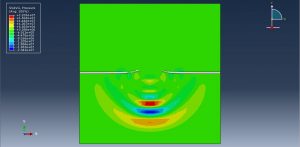
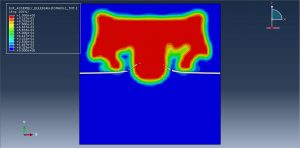
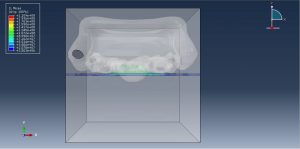
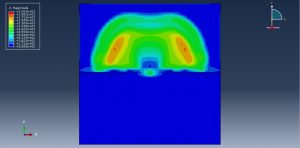
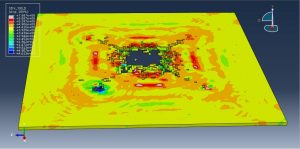
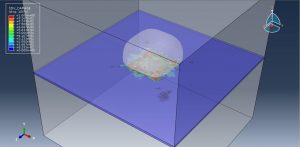
You can provide CAE ,INP,and English video files of this simulation here. The cost of these files is Thirty Euros. you can click on the bellow bottom to beginning process
You can purchase the tutorial through a PayPal account, a Visa, or a Master card, just before payment,send me an email to this address: karampourp@gmail.com
 Abaqus tutorials Abaqus tutorials
Abaqus tutorials Abaqus tutorials
